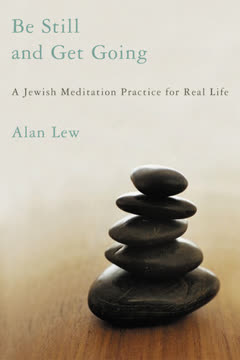Key Takeaways
1. Suffering as a Catalyst for Spiritual Awakening
The strength of a person’s desire is brought about by the impediments that happen to him, so when a person needs to do something, then a hindrance arises in his path.
Suffering's transformative power. Suffering, often viewed as an inherent defect, can serve as a divine instrument, awakening us to the spiritual path and strengthening our resolve. Rebbe Nachman suggests that obstacles increase our desire and commitment to holy tasks, highlighting the potential for growth amidst adversity.
Turning suffering into insight. What we perceive as suffering is frequently the gap between reality and our desires. By confronting these painful truths, we gain a clearer vision of our lives. For instance, a woman's anxiety about her stepdaughters' birth mother illuminated her pre-existing insecurities, transforming a source of suffering into a pathway for self-awareness.
Spiritual practice as preparation. Spiritual practices like meditation prepare us for life's inevitable moments of leave-taking, enabling us to constructively utilize crises as opportunities for growth and encounters with the transcendent. The traumas and crises of life don’t automatically bring us to the point of a spiritual breakthrough. They are just as likely to crush and embitter us.
2. The Illusion of Control and the Acceptance of Suffering
If we search our souls and we find that we have done nothing to cause our suffering, and if our religious commitment is beyond reproach, then we can be confident that the suffering must be yisurin shel ahavah—“an affliction born of love,” a suffering God has visited upon us out of his boundless love for us.
Examining the meaning of suffering. The Talmudic sage Raba suggests a three-part approach to understanding suffering: examining our behavior, assessing our spiritual practice, and considering it as an affliction born of love. While these propositions offer potential explanations, they are not universally applicable.
The limits of understanding. Rabbi Yochanan's experience of losing ten children highlights the existence of irredeemable suffering, challenging the notion that all pain has a purpose. This acknowledgment underscores the limitations of human understanding and the need to accept the uncontrollable aspects of life.
The power of presence. In the face of inexplicable suffering, the most profound response is often empathy and presence. The story of Rabbi Yochanan and Rabbi Eleazar illustrates that compassionate presence can offer healing and solace when theological explanations fall short.
3. Conflict as a Reflection of Inner Turmoil
The angel of God tells Jacob that the very thing he can’t stand about himself—the very thing no one can stand about him—is in fact his divine name.
Conflict's origins. The Torah presents a triptych of stories—Adam and Eve, Cain and Abel, and the Tower of Babel—to illustrate how conflict originates within individuals and expands outward. These narratives demonstrate the progression from inner struggle to interpersonal strife and, ultimately, to collective rebellion against the divine will.
The cycle of projection. Cain's murder of Abel exemplifies how inner conflict can be projected onto others, leading to violence and destruction. This pattern highlights the importance of recognizing and addressing our own darkness to prevent its manifestation in external conflicts.
The illusion of control. The Tower of Babel story reveals humanity's desire to control its destiny, leading to a rebellion against God's will. This pursuit of control often results in unintended consequences and underscores the need for humility and acceptance of the natural order.
4. The Five-Step Program for Overcoming Fear
But Moses said to the people, “Don’t be afraid. Collect yourselves and see the salvation which Adonai will make for you today. . . . Adonai will fight for you and you will be still.” Then Adonai said to Moses, “Why do you cry out to me? Tell the Israelites to just get going.”
Facing fear with action. The exodus from Egypt provides a five-step program for overcoming fear and taking decisive action:
- Don't be afraid (al tira-u): Acknowledge fear without letting it paralyze you.
- Collect yourselves (hityatzvu): Gather your awareness and stand firm.
- See (uru): Gain clarity and perspective on the situation.
- Be still (tacharishun): Cultivate inner stillness and trust.
- Get going (v’yisa-u): Take action in alignment with the moment.
The power of Wu Wei. God's command to "get going" emphasizes the importance of acting in accordance with the present moment, a concept akin to the Taoist principle of Wu Wei. This involves acting without ego, allowing the necessary action to arise from a state of stillness and clarity.
From fear to freedom. By following these steps, we can transform fear into a catalyst for action, enabling us to overcome obstacles and move forward with purpose and conviction. The traumas and crises of life don’t automatically bring us to the point of a spiritual breakthrough. They are just as likely to crush and embitter us.
5. Embracing Emptiness as a Path to Wholeness
I am weeping for cal hai shufra d’balei b’afra—I am weeping for all this perfection, all this beauty which is fading into the earth.
The inevitability of impermanence. Rabbi Eleazar's lament for the fading beauty of the world highlights the transient nature of all things. Recognizing this impermanence allows us to appreciate the present moment and find meaning in the face of loss.
The illusion of control. The Talmudic discussion on suffering reveals the limitations of human understanding and the futility of trying to control the uncontrollable. Accepting this reality allows us to relinquish the need for explanations and find peace in the midst of uncertainty.
The power of presence. In the face of suffering, the most profound response is often empathy and presence. The story of Rabbi Yochanan and Rabbi Eleazar illustrates that compassionate presence can offer healing and solace when theological explanations fall short.
6. Unmasking God in the Everyday World
Ehiyeh asher ehiyeh”—“I will be as I will be,” God replies. But the verb ehiyeh is a very strange verb in Hebrew, a rendering of the verb “to be” in a flowing tense partaking of past, present, and future, so that God’s reply might just as easily be rendered “I was as I was” or “I am as I am.”
God's presence in the present. God's name, "Ehiyeh asher ehiyeh," signifies absolute and unconditioned being in the present moment. This implies that God is the only thing that can be truly present, and approaching the present moment brings us closer to the divine.
Meditation as a path to presence. Meditation helps us let go of extraneous thoughts and feelings, allowing us to experience the present moment more fully. By entering the present moment, we approach God and participate in the timeless flow of life.
The transformative power of presence. By embracing the present moment, we can transform our consciousness and experience a sense of connection to the divine. This transformation enables us to see the world as sacred and find meaning in every aspect of our lives.
7. The Interconnectedness of Time and Spiritual Consciousness
The strength of a person’s desire is brought about by the impediments that happen to him, so when a person needs to do something, then a hindrance arises in his path.
Kedem's dual nature. The Hebrew word kedem, meaning both "east" and "ancient past," connects the stories of conflict in the Torah and suggests a cyclical progression. This highlights the interconnectedness of time and the recurring nature of human struggles.
The flow of spiritual consciousness. Rashi's interpretations of the patriarchs' actions reveal a stream of spiritual consciousness that transcends time. By entering this stream, we connect with the wisdom and practices of past generations.
The power of the present moment. The concept of Wu Wei emphasizes the importance of acting in alignment with the present moment, allowing the necessary action to arise from a state of stillness and clarity. This approach enables us to move forward with purpose and conviction.
8. The Power of Presence and Compassion
He said give me your hand. He gave him his hand and he healed him.
The healing power of presence. The Talmudic stories of Rabbi Yochanan and Rabbi Hiyya emphasize the importance of human presence in healing. This presence transcends words and actions, offering a sense of connection and support that can alleviate suffering.
Breaking the prison of self. Illness can isolate us, creating a sense of being trapped in our own bodies and minds. The presence of another attuned human being can break this isolation, reminding us that our consciousness is not limited to our individual selves.
Connecting to a larger consciousness. Offering prayers in Hebrew, even to those who are not religious, can connect them to a spiritual consciousness larger than their own. This connection can provide comfort and a sense of belonging during times of crisis.
9. The Journey Through the Four Worlds
I am weeping for cal hai shufra d’balei b’afra—I am weeping for all this perfection, all this beauty which is fading into the earth.
The Kabbalistic framework. The Kabala's Four Worlds—atzilut, briyah, yetzirah, and asiyah—provide a framework for understanding the relationship between the material world and the divine. This framework can guide our spiritual practice, helping us move from the physical to the transcendent.
The path of ascent. Spiritual practice involves a journey from the world of action (asiyah) to the world of pure emanation (atzilut). This journey requires us to move beyond the body, the heart, and the mind to reach the source of all being.
The interconnectedness of all realms. Each of the Four Worlds is an expression of all the others, highlighting the interconnectedness of all aspects of existence. By recognizing this interconnectedness, we can gain a deeper understanding of ourselves and the world around us.
10. The Dance of Form and Emptiness
The most powerful exercise I know for approaching the present moment is, of course, meditation.
The nature of reality. The world is a constant flow of change, with no fixed points or permanent states. Recognizing this impermanence allows us to embrace the present moment and find peace in the midst of uncertainty.
The limitations of form. Our attempts to define and control the world through language and concepts are ultimately limited. By letting go of these constructs, we can experience the underlying emptiness that connects all things.
The power of meditation. Meditation helps us to see beyond the limitations of form and connect with the underlying emptiness of existence. This connection enables us to find peace, compassion, and a sense of belonging in the face of life's challenges.
Last updated:
FAQ
1. What is Be Still and Get Going by Alan Lew about?
- Jewish Meditation Practice: The book introduces a meditation practice rooted in Jewish texts and traditions, integrating mindfulness with prayer, Torah study, and Sabbath observance.
- Spiritual Transformation: Alan Lew explores how meditation leads to transformation, moving from unconsciousness to awareness and from tension to relaxation, using biblical stories as metaphors.
- Practical Spiritual Guide: Rather than abstract theology, the book offers concrete guidance and exercises for daily spiritual practice.
- Accessible Wisdom: It makes ancient Jewish spiritual wisdom relevant and accessible to both Jews and non-Jews seeking meaning.
2. Why should I read Be Still and Get Going by Alan Lew?
- Unique Integration: The book uniquely blends Jewish tradition with contemporary meditation, offering a fresh, accessible approach to spirituality.
- Practical Tools: Readers gain actionable advice for managing fear, embracing destiny, and cultivating mindfulness in daily life.
- Transformative Perspective: Lew encourages a courageous embrace of one’s true self, offering a path to spiritual liberation through stillness and awareness.
- Universal Relevance: While rooted in Judaism, its insights are valuable for anyone on a spiritual path seeking deeper connection and meaning.
3. What are the key takeaways from Be Still and Get Going by Alan Lew?
- Stages of Spiritual Growth: The book outlines a journey from awareness of place, to self-acceptance, to divine presence, using biblical stories as a map.
- Daily Practice is Essential: Consistent meditation, prayer, and Torah study are emphasized as the foundation for real transformation.
- Embracing Suffering and Fear: Suffering and fear are reframed as catalysts for spiritual growth, not obstacles.
- Living in the Present: The ultimate goal is to saturate every moment with awareness, transforming ordinary life into sacred encounter.
4. How does Alan Lew define meditation in Be Still and Get Going?
- Transformation Through Practice: Meditation is described as a process of becoming—moving from unconsciousness to awareness, and from scattered to centered.
- Encounter with the Divine: It is a human encounter with God or the absolute, helping us become who we truly are.
- Daily Discipline: Lew stresses the importance of daily, disciplined meditation rather than occasional retreats.
- Mindfulness Focus: The practice centers on breath and body awareness, cultivating presence and stillness.
5. What are the key stages of spiritual transformation in Be Still and Get Going by Alan Lew?
- Sacred Place Awareness: Inspired by Jacob’s ladder, this stage involves saturating the present moment with awareness, making ordinary reality sacred.
- Embracing the Self: Drawing from Jacob’s wrestling with the angel, this stage is about confronting and accepting one’s shadow and unique nature.
- Consciousness of God: Based on Moses’s burning bush encounter, this stage involves recognizing God’s presence in the present moment.
- Ongoing Practice: These stages unfold through meditation, moving from awareness of place, to self, to divine presence.
6. What practical meditation advice does Alan Lew give in Be Still and Get Going?
- Posture and Breath: Sit with a forward pelvic tilt, root yourself in the earth, and focus on deep, natural breathing at the diaphragm.
- Mindful Awareness: Gently focus on breath and body, notice when thoughts arise, and return focus without judgment.
- Group Practice: Meditating with others supports discipline and counters isolation, fostering interconnectedness.
- Daily Commitment: Consistent daily practice in a quiet, uncluttered space is essential for transformation.
7. What is the five-step program for facing fear in Be Still and Get Going by Alan Lew?
- Don’t Panic: Recognize and resist acting on imagined fears, which are often phantoms.
- Pull Yourself Together: Collect scattered awareness and stand firm with your experience.
- See Clearly: Observe your experience as it really is, not as distorted by fear.
- Be Still: Enter a deep stillness that arises from clarity and firmness.
- Get Going: From stillness, allow necessary action to arise naturally and move forward.
8. How does Be Still and Get Going by Alan Lew address suffering and its role in spiritual practice?
- Suffering as Catalyst: Suffering is seen as central to the spiritual path, often forcing us to confront reality and open to transformation.
- Comparative Wisdom: The book draws parallels between Jewish and Buddhist teachings on suffering’s inevitability and its potential to awaken desire.
- Obstacles Increase Desire: Suffering and obstacles are viewed as divine instruments that increase resolve and propel us toward holiness.
- Meditation and Suffering: Meditation helps us inhabit suffering fully, transforming pain into a gateway to deeper presence.
9. What is the significance of emptiness and stillness in Be Still and Get Going by Alan Lew?
- Sacred Emptiness: Emptiness is presented as a radiant, charged core of being, the source of life and healing.
- Impossibility of Absolute Stillness: The book acknowledges that stillness and focus are impossible to sustain absolutely, reflecting life’s constant flux.
- Healing Through Flow: Letting go into emptiness allows life to flow naturally, reducing suffering caused by clinging.
- Symbolism: The Holy of Holies and the primordial light are used as metaphors for this sacred emptiness.
10. What are the key Jewish concepts explored in Be Still and Get Going by Alan Lew?
- Beshert and Destiny: The book discusses destiny and how love and vocation are intertwined with divine mission.
- Hineni – Readiness: “Hineni” (“I am here”) represents submission and preparedness to live out one’s destiny, illustrated by Moses’s journey.
- Four Worlds: The Kabbalistic doctrine of the Four Worlds frames the spiritual journey from physicality to pure spiritual emanation.
- Unmasking God: Spiritual practice is about revealing the hidden divine presence behind worldly forms, as exemplified by the Purim story.
11. How does Be Still and Get Going by Alan Lew interpret Jewish holidays like Hanukkah and Purim?
- Hanukkah as Light from Emptiness: The holiday is reframed as a celebration of light arising from emptiness, reflecting the miracle of creation.
- Rabbis’ Ambivalence: The book discusses the Talmudic rabbis’ initial resistance to Hanukkah and how it was integrated into Jewish tradition.
- Purim as Unmasking God: Purim is portrayed as a story of God’s hiddenness, with the spiritual task of revealing divine light.
- Spiritual Lessons: Both holidays symbolize deeper realities—emergence of light from darkness and the hiddenness of divine providence.
12. What role does Torah study play in Be Still and Get Going by Alan Lew?
- Torah as Meditation: Torah study is approached as a meditative practice, revealing spiritual insights beyond intellectual understanding.
- Daily Practice: Setting aside fixed daily time for Torah study, ideally after meditation, is recommended for cultivating sensitivity to the text.
- Life and Text Interconnected: Moments in life and Torah passages can reflect and illuminate each other, deepening spiritual understanding.
- Timelessness of Torah: The book discusses the multidirectional flow of spiritual time, highlighting the living nature of Torah.
Review Summary
Be Still and Get Going receives mixed reviews, with an overall rating of 4.19/5. Many readers find it illuminating and insightful, praising Lew's integration of Jewish spirituality with Buddhist concepts. Some appreciate its practical approach to meditation and Torah interpretation. However, critics argue the book lacks structure, is overly focused on the author's personal experiences, and may not be helpful for meditation beginners. Some readers find it dry or boring, while others consider it life-changing and deeply moving. The book seems to resonate most with those seeking to blend Jewish tradition with mindfulness practices.
Similar Books
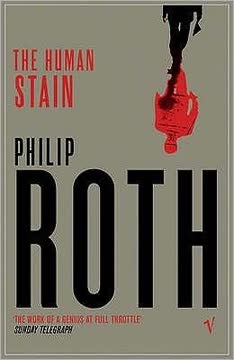

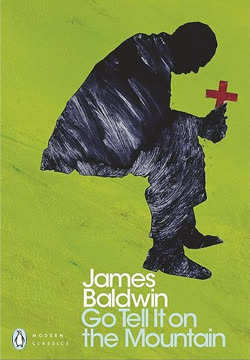

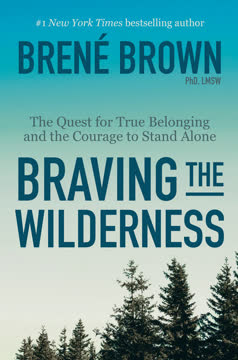
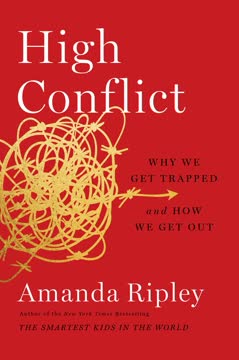

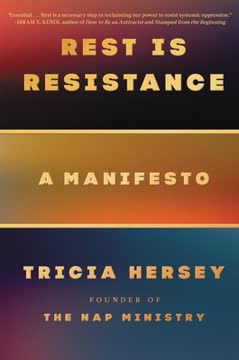

Download PDF
Download EPUB
.epub digital book format is ideal for reading ebooks on phones, tablets, and e-readers.
